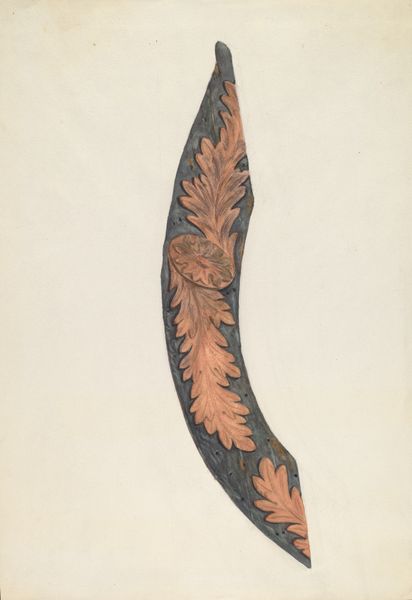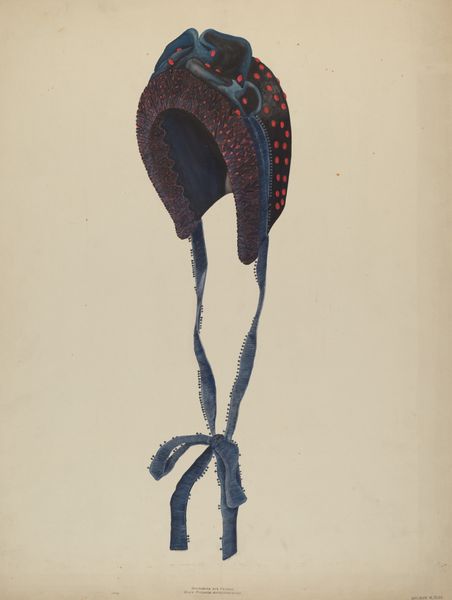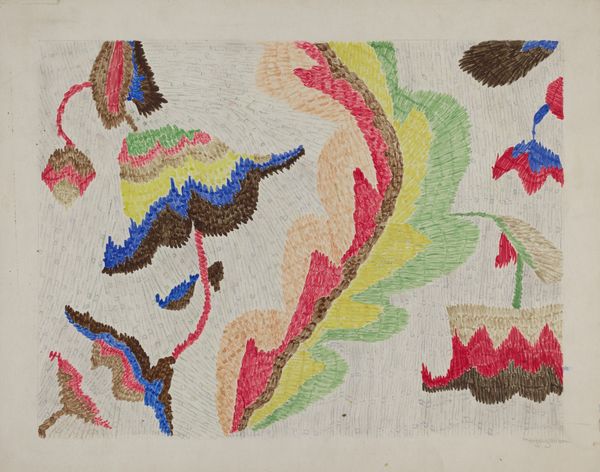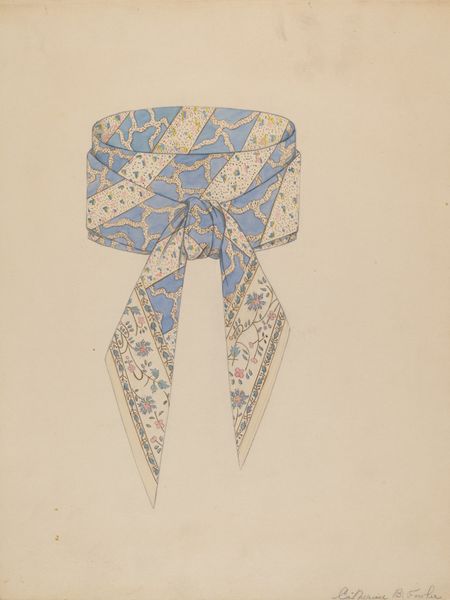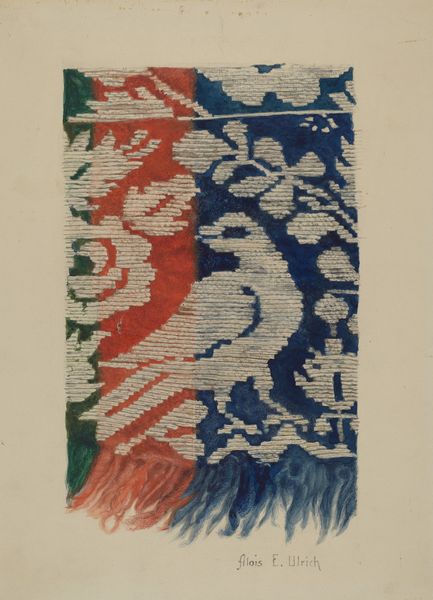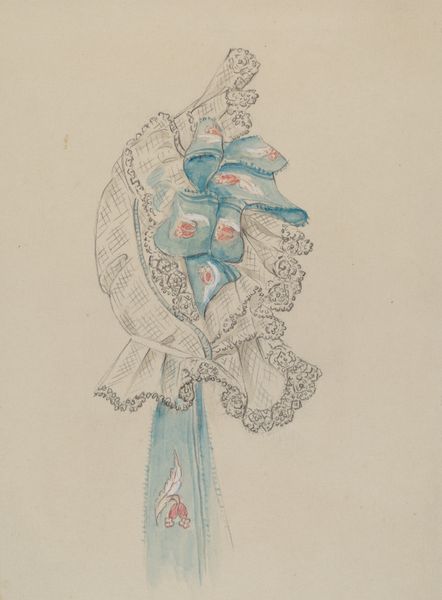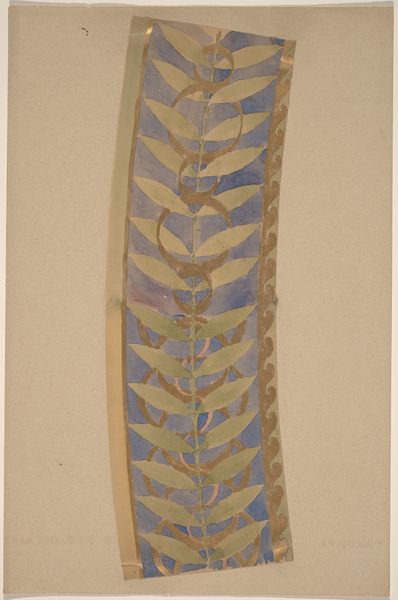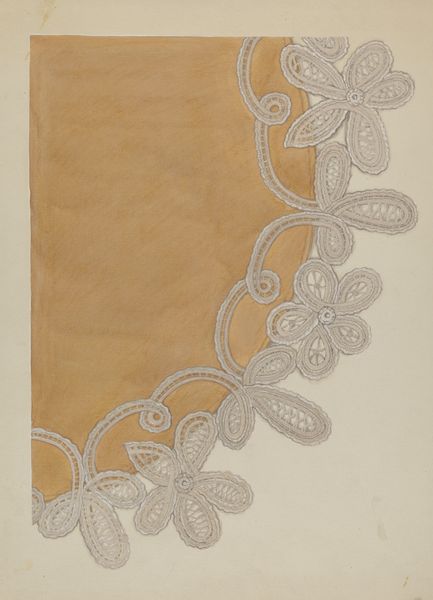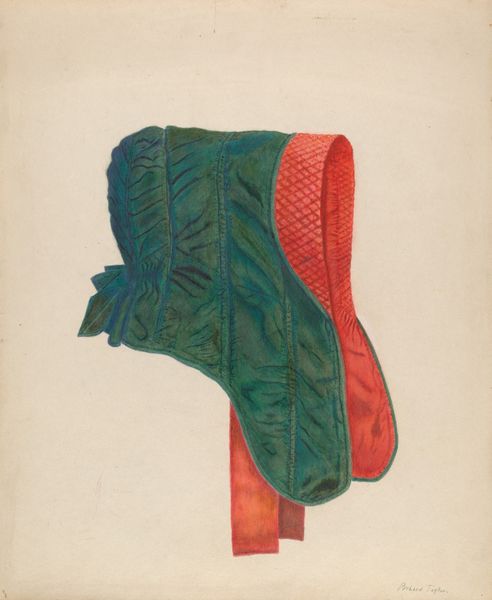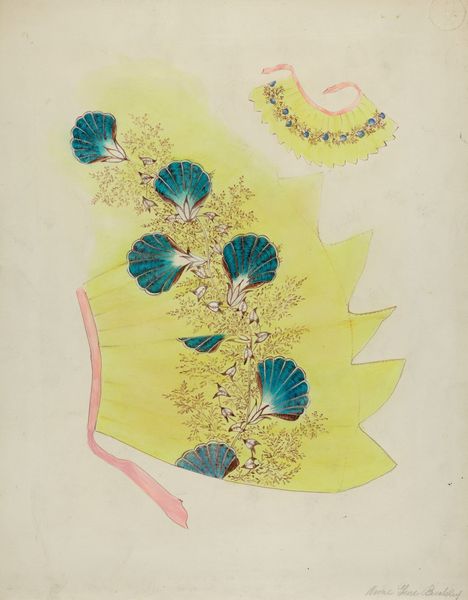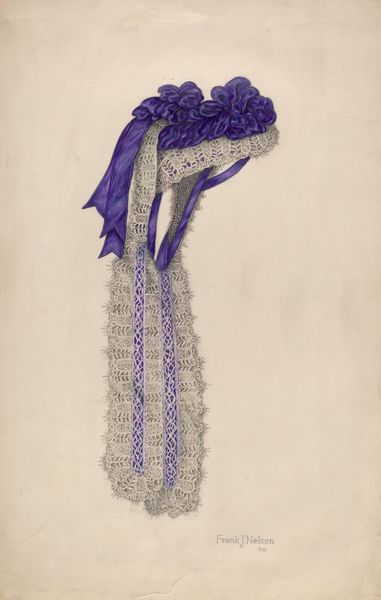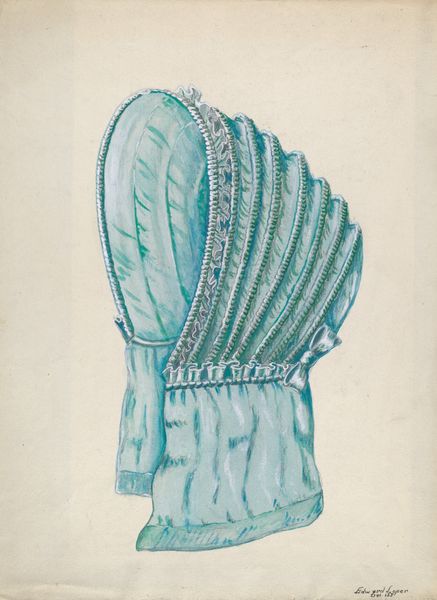
textile, cotton
#
textile
#
naive art
#
cotton
#
watercolour illustration
#
decorative-art
Dimensions: overall: 44.3 x 34.4 cm (17 7/16 x 13 9/16 in.)
Copyright: National Gallery of Art: CC0 1.0
Curator: Looking at this, I’m suddenly craving a Turkish delight! It’s just so exuberantly ornate and delicious looking. Editor: Indeed! What you're seeing here is a piece entitled "Printed Cotton", designed by Alice Cosgrove sometime between 1935 and 1942. The material itself combines watercolor illustration and drawing techniques upon fabric to realize this vibrant sample. Curator: You know, the “incomplete-ness” of it—the way the design fades into ghostly outlines—is quite powerful. It feels like catching a dream on its way out the door. It’s there, then…not quite. Editor: That tension speaks volumes about textile design’s role. Cosgrove was part of a system—a manufacturer probably—responding to trends and demands. This wasn’t “art for art's sake” but something intended for circulation, for use in the everyday. That tentative feel may be suggestive of designs that remained unrealized due to wartime resource scarcity. Curator: It makes you wonder what rooms, what lives this cotton might have adorned! Were they grand sitting rooms, or simple bedrooms filled with laughter and children’s toys? It has a kind of naïve quality that speaks to hope, maybe, in uncertain times. Like a riot of summer blooms blooming against a winter sky. Editor: Precisely! And consider the history of pattern books, design samples, the dissemination of images—all part of an economy of vision. “Printed Cotton” existed to persuade, to promise the buyer a particular kind of aesthetic identity or even, aspiration. Curator: Mmh. It reminds me how profoundly intertwined design is with identity—both personal and cultural. I think that tension of "realized vs unrealized" makes me consider what could have been possible. The possibilities feel endless! Editor: So well put. This work isn't merely about its surface; it is suggestive of larger cultural infrastructures and aspirations—material witnesses to our persistent need to imprint ourselves and our desires on the world around us.
Comments
No comments
Be the first to comment and join the conversation on the ultimate creative platform.
